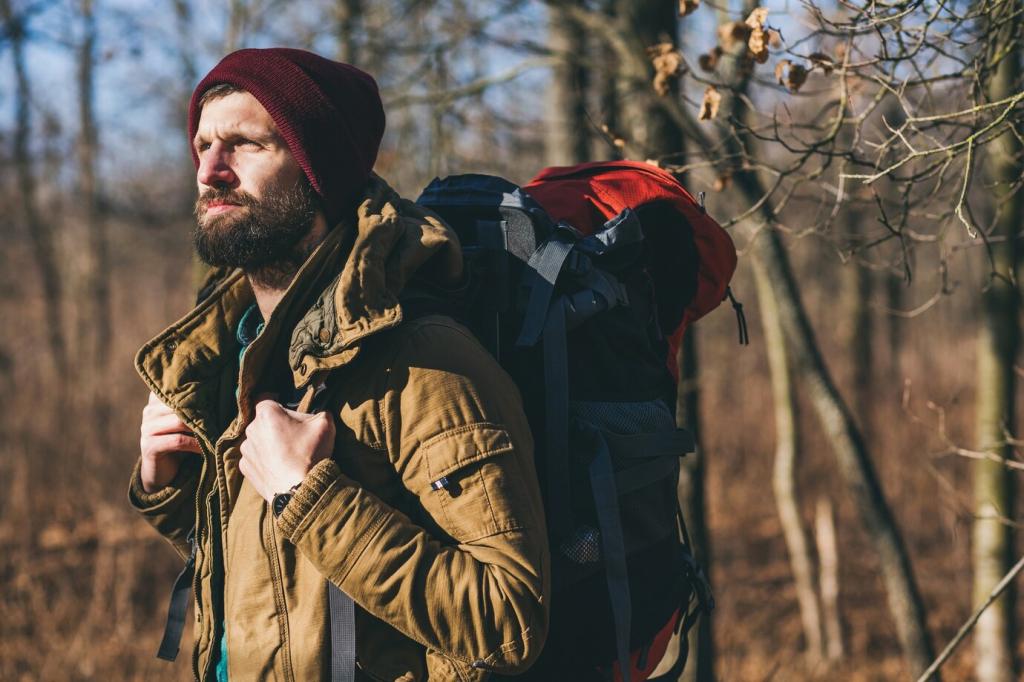
Navigating Weather Changes for Seasonal Mountain Hikes
Chosen theme: Navigating Weather Changes for Seasonal Mountain Hikes. Explore practical wisdom, timely strategies, and real stories to help you read the sky, adapt plans, and hike safer across every season. Join the conversation and subscribe for fresh trail-tested insights each week.
Reading Mountain Skies: Forecasts, Patterns, and Microclimates
From Apps to Altitudes: Making Forecasts Mountain-Smart
General forecasts rarely capture ridge-top reality. Cross-check mountain-specific sources, compare elevations, and note wind speeds on exposed summits. Keep a trip log, calibrate expectations, and tell us which tools earn your trust on variable days.
Cloud Clues: Lenticulars, Anvils, and Building Cumulus
Mountains sculpt clouds that forecast change. Smooth lenticular stacks hint at strong winds aloft, while anvil tops and rapidly growing cumulus warn of thunderstorms. Snap a photo, share your observation, and compare patterns with other hikers.
Microclimates and Aspects: Valleys, Saddles, and Wind Funnels
A calm valley can hide a roaring ridge. Watch for funnels at saddles, shaded icy aspects, and sun-baked slopes shedding heat. Note your route’s exposures, adjust layers early, and drop a comment about tricky microclimates you’ve encountered.
Seasonal Strategies: Spring Thaw to Winter Inversions
Mornings bring firm crust that collapses by noon, revealing slush, postholes, and hidden water. Expect graupel bursts and fast-moving showers. Carry gaiters, adjust timing, and tell readers what spring tactics help you stay warm, dry, and efficient.

Seasonal Strategies: Spring Thaw to Winter Inversions
Plan dawn starts to beat convection. Watch dew points, buildups by late morning, and outflow winds racing ahead of storms. Know lightning protocols, hydrate aggressively, and share your favorite mid-day shade strategies for high, exposed traverses.
Smart Layering: Regulate Heat Without Sweat-Soaked Risks
Wet base layers rob heat fast when winds rise. Use venting, grid fleece, and light insulated pieces you can swap quickly. Practice transitions during breaks, and tell us which fabrics keep you comfortable without penalty on steep, variable climbs.
Storm Shields: Shells, Shelters, and Staying Dry
A reliable shell protects from rain and spindrift, but fit matters in gusts. Add a minimalist tarp or bothy bag for emergency waiting. Share your packed weights, tradeoffs, and hard-earned lessons about balancing durability, breathability, and cost.
Traction and Tools: When Trails Turn Slick or Snowy
Carry microspikes, a light axe where appropriate, and trekking poles with winter baskets. Practice self-belay on safe slopes. Report what traction pairs best with your terrain, and how you stow gear for rapid deployment when clouds thicken.
Route Planning with Weather in Mind
Choose Aspects and Elevation Gains that Match the Day
On windy days, pick leeward traverses below ridge crests. In heat, favor shady north aspects and reliable water. When snow lingers, contour instead of climbing fall-line gullies. Post your favorite weather-savvy routes others can learn from.
Build Bailout Options and Decision Points
Pre-select sheltered gullies, forest benches, or traverses that exit quickly. Mark turnaround times tied to storm stages. Announce decisions aloud to align expectations. Share a screenshot of your annotated map to help newcomers visualize practical alternatives.
Timing the Day: Starts, Summits, and Safe Exits
Start early for firm snow and calmer winds, tag summits before convection builds, and descend as cells form. Keep snacks handy to shorten stops. Tell us how timing tweaks changed outcomes on your most weather-challenged mountain days.
Risk, Judgment, and Group Communication
Know the 30-30 rule, avoid isolated trees and ridge tops, and spread out to reduce strike risk. In severe winds, lower profile, protect eyes, and retreat. Comment with lightning drills you rehearse and how you choose safer waiting zones.
